Some of my fondest childhood memories revolve around helping my Lola Norma gather fresh kangkong (water spinach) from our backyard in Bataan. We'd wade through the marshy area behind our house, carefully picking the crispest stems and most vibrant leaves while fighting off the occasional playful mosquito.
This Adobong Kangkong recipe brings me right back to those sun-drenched mornings, when the smell of garlic browning in oil would smell through our wooden kitchen windows, signaling that lunch was about to be extra special.
While kangkong is now readily available in most markets, there's something unique about this simple vegetable dish that continues to bring Filipino families together, whether you're enjoying it as ulam with hot rice after a long day or serving it alongside inihaw na liempo during weekend gatherings.
Jump to:
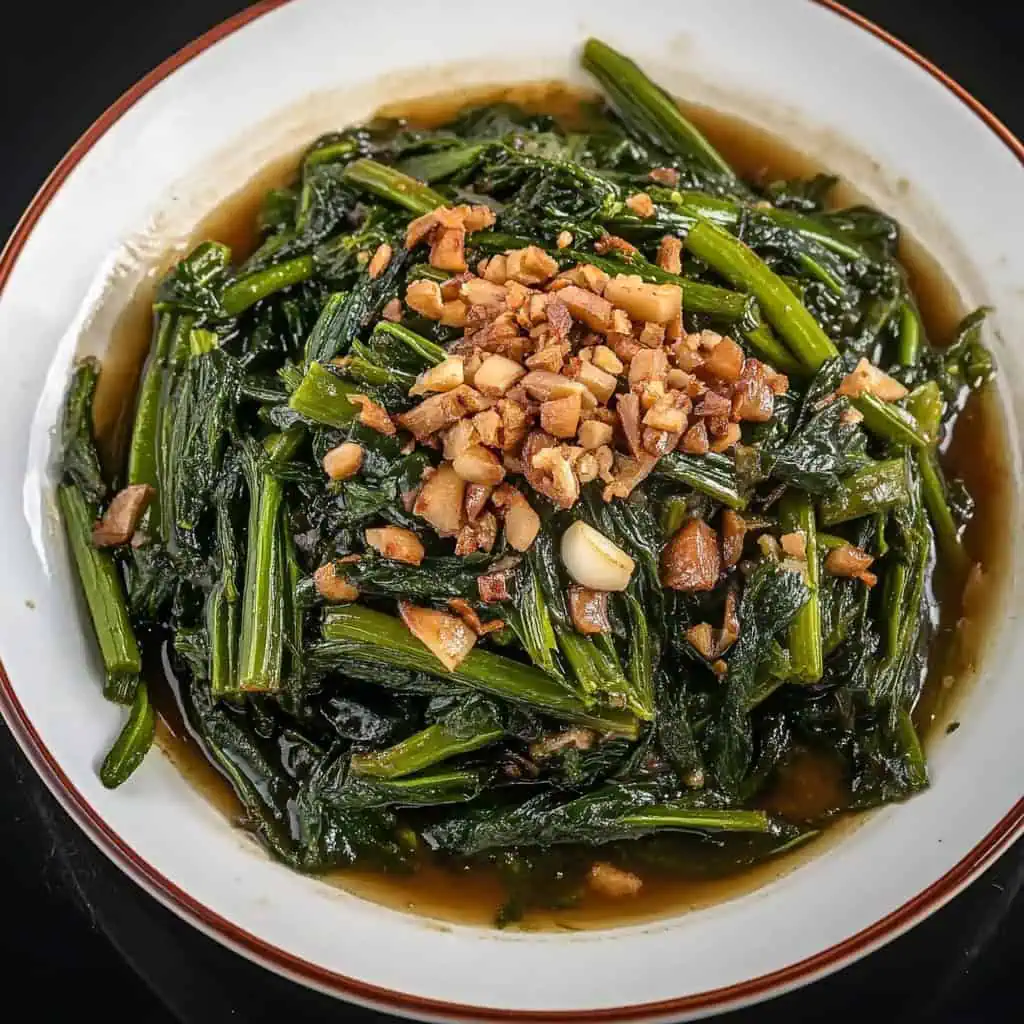
Why You'll Love This Recipe
- Quick and budget-friendly: Ready in just 20 minutes using simple, affordable ingredients
- Healthy and nutritious: Packed with vitamins A, C, iron, and antioxidants
- Authentic Filipino flavor: The perfect balance of garlic, soy, and vinegar
- Versatile: Works as a side dish or main course
- Beginner-friendly: Simple techniques perfect for novice cooks
Ingredients
This recipe showcases the perfect Filipino adobo flavor profile. The abundant garlic creates a savory base, while the soy sauce adds umami depth and the vinegar provides the signature tangy brightness.
The kangkong's mild flavor absorbs these strong elements beautifully, creating a balanced dish. Cooking the firmer stems first, then briefly adding the tender leaves ensures perfect texture throughout, crisp-tender stems and wilted (not mushy) leaves for a simple yet satisfying dish.
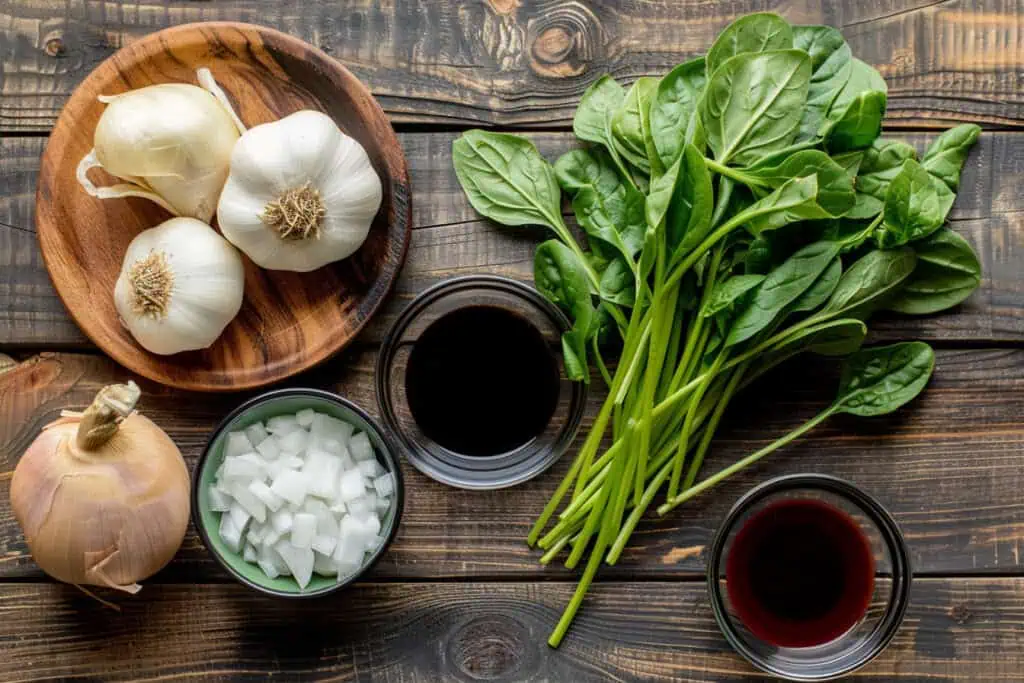
- 1 bunch kangkong (water spinach), about 500g
- 1 whole head garlic, crushed and chopped
- 1 medium onion, chopped
- ¼ cup soy sauce
- ⅛ cup vinegar
- ½ cup water (optional)
- 3 tablespoons cooking oil
- Ground black pepper to taste
- Salt to taste (optional)
Equipment
- Large wok or deep skillet (kawali) - For even heat distribution and easy tossing of the vegetables
- Sharp knife - For precise cutting of vegetables, especially separating kangkong leaves from stems
- Cutting board - Provides a stable surface for preparation work
- Colander - Essential for washing and properly draining kangkong to remove any dirt or grit
- Measuring cups and spoons - Ensures accurate ingredient portions for balanced flavor
- Wooden spoon - Allows for gentle stirring without damaging the delicate vegetables
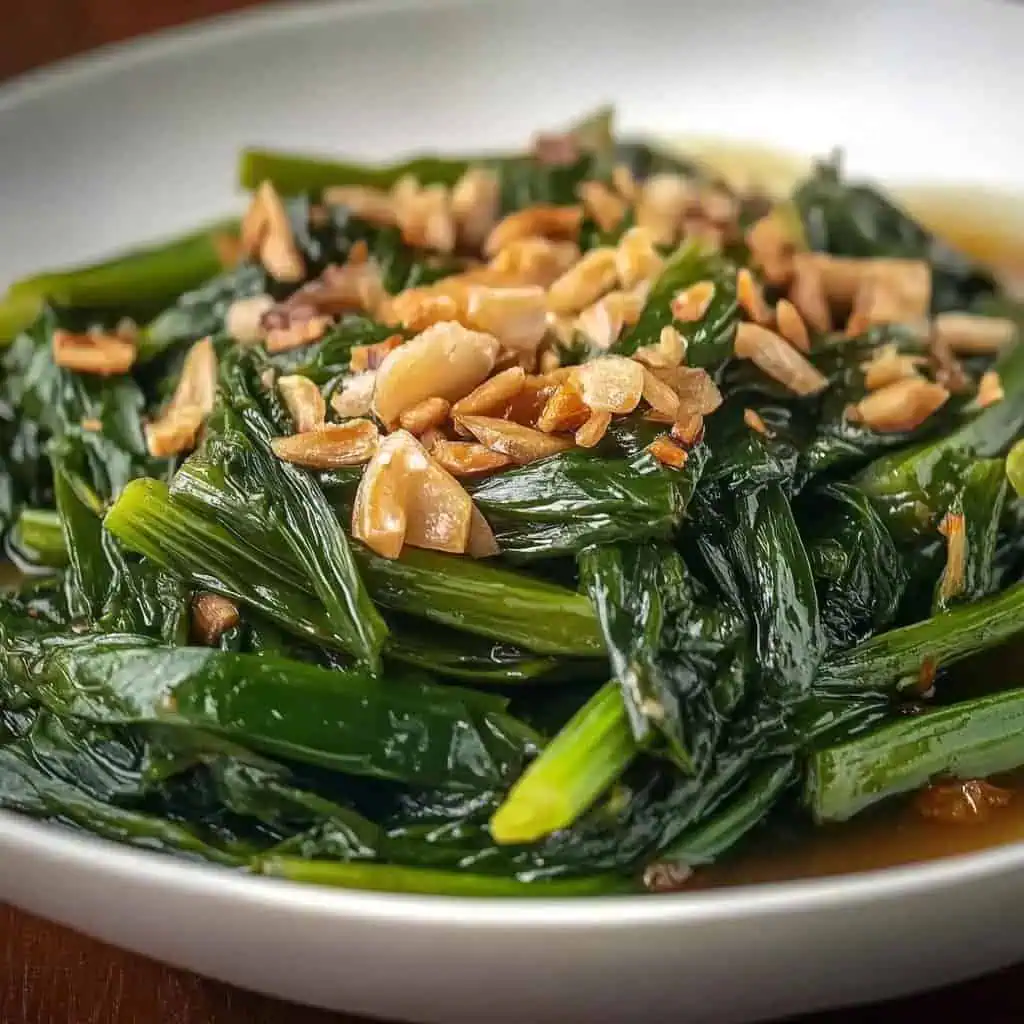
How To Make
- Begin by preparing the kangkong: Separate the leaves from the stalks and cut the stalks into 1-inch pieces. Wash thoroughly under running water and drain in a colander. Peel and crush one whole head of garlic, then chop the onion.
- Heat 3 tablespoons of cooking oil in a large wok or deep skillet over medium heat (180°C/350°F). Add the crushed garlic and sauté until golden brown, about 2-3 minutes. Remove one-fourth of the browned garlic and set aside for garnish.
- Add the chopped onions to the remaining garlic in the wok and cook until translucent, about 3-4 minutes. Pour in ¼ cup soy sauce and ⅛ cup vinegar. Allow the mixture to come to a boil.
- Add the kangkong stalks first and cook for 2 minutes until slightly tender but still crisp. Add the leaves and gently stir for 30-60 seconds, being careful not to overcook to prevent bitterness.
- Season with ground black pepper and salt if needed. Give everything a final gentle toss to combine. Transfer to a serving dish and top with the reserved crispy garlic.
- Serve immediately while hot with steamed rice for the best taste and texture.

Tips from Lola's Kitchen
- Separate and time it right: Always cook stems for 1-2 minutes before adding leaves. Stems need more time to tenderize while leaves cook in seconds.
- The crispier, the better: For extra crispy garlic topping, fry it separately and sprinkle just before serving.
- Washing technique: Soak kangkong in cold water for 5 minutes, then rinse under running water to remove all sand and dirt.
- Perfect balance: If your adobo sauce is too strong, add a splash of water. If too weak, let it reduce a bit longer.
- Know your kangkong: Choose bunches with crisp, bright green stems and leaves without yellow spots for the freshest flavor.
- Don't cover while cooking: Keep the wok uncovered to maintain the vibrant green color and prevent overcooking.
- Oil temperature matters: Make sure your oil is hot before adding garlic to achieve that perfect golden brown color without burning.
- Stem selection: The bottom 2 inches of kangkong stems can be tough - trim these parts away for the best texture.
Substitutions
- Soy sauce: Liquid aminos or light soy sauce work well for a less salty version.
- White vinegar: Apple cider vinegar or cane vinegar offer different flavor profiles but work beautifully.
- Regular garlic: Black garlic can be used for an incredible umami boost (use half the amount).
- Kangkong: In a pinch, regular spinach can substitute, though cooking time will be much shorter.
- Cooking oil: Coconut oil adds a unique tropical flavor that complements the dish.
- Onions: Shallots can replace onions for a milder, sweeter flavor.
- Fresh kangkong: If only frozen is available, thaw completely and reduce cooking time by half.
- Ground pepper: White pepper can be used for a different heat profile without the black specks.
Troubleshooting
- Bitter kangkong: You've overcooked the leaves. Next time, cook leaves for maximum 30-60 seconds and immediately remove from heat.
- Slimy texture: The kangkong wasn't dried properly after washing. Use a salad spinner or pat dry with paper towels before cooking.
- Too salty: Add a splash of water or calamansi juice and a pinch of sugar to balance the flavors.
- Too sour: Balance with a teaspoon of sugar or a bit more soy sauce.
- Tough kangkong stems: Cook the stems longer (3-4 minutes) before adding the leaves.
- Watery dish: Cook uncovered and on higher heat to reduce excess liquid.
- Burnt garlic: If garlic burns, start over as it will make the entire dish bitter. Use medium-low heat when toasting garlic.
- Lacking flavor: Let the dish sit for 5 minutes before serving to allow flavors to meld together.
Storage & Reheating
- Refrigeration: Store in an airtight container in the refrigerator for up to 2 days. The flavor actually develops nicely overnight.
- Not freezer-friendly: Freezing will destroy the texture of kangkong, making it mushy when thawed.
- Best reheating method: Quick stir-fry in a hot pan for 1-2 minutes to restore some crispness.
- Microwave option: If in a hurry, microwave for 30 seconds, but texture will be softer.
- Room temperature: Safe at room temperature for up to 2 hours before bacteria growth becomes a concern.
- Reviving wilted leftovers: Add a splash of vinegar and quick toss in hot oil to refresh.
- Sauce separation: If sauce separates during storage, simply stir well when reheating.
- Repurposing leftovers: Chop leftover adobong kangkong and add to fried rice for a delicious next-day meal.
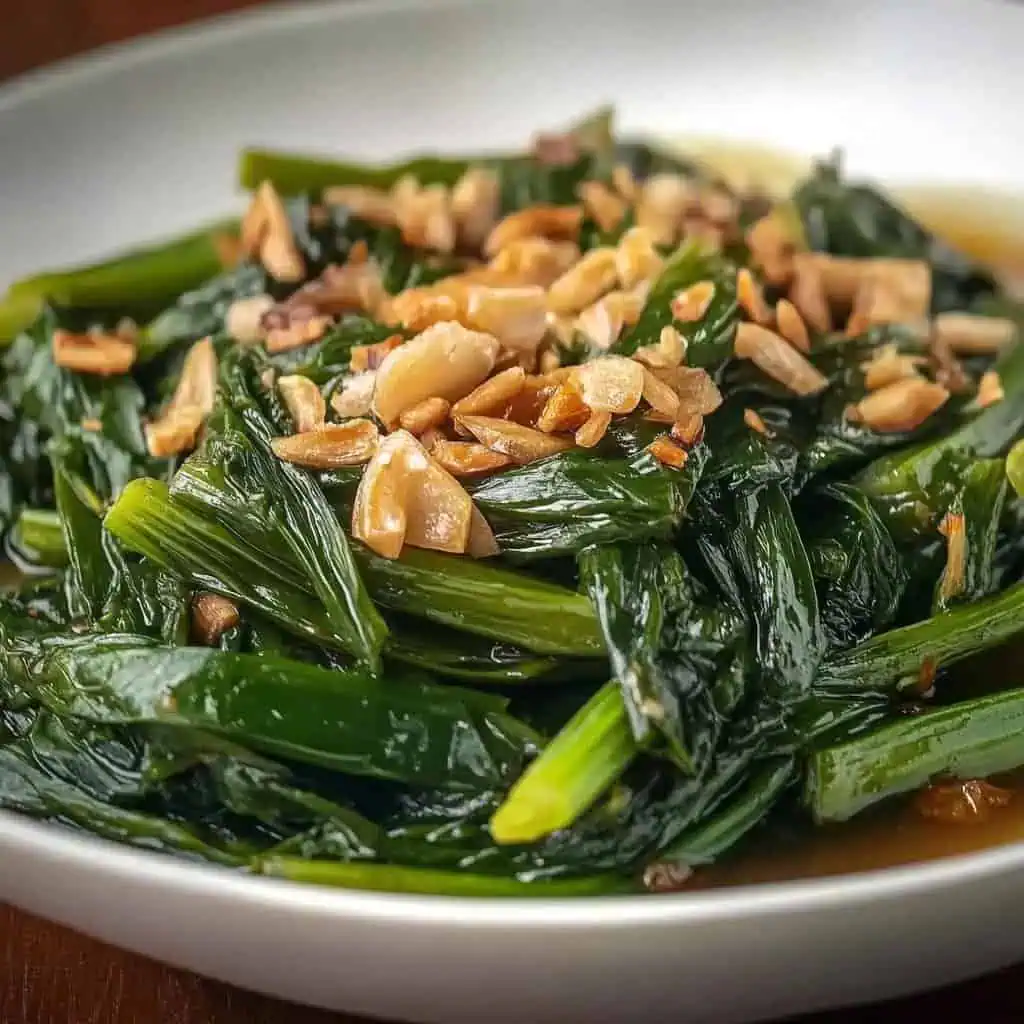
FAQ
Why is my kangkong bitter?
Overcooking causes bitterness. Cook leaves for maximum 1 minute and serve immediately.
Can I use baby kangkong for this recipe?
Yes, baby kangkong is more tender, so reduce cooking time by half for best results.
Is this dish healthy?
Very healthy! Kangkong is rich in vitamins A, C, iron, and antioxidants, while using minimal oil.
Can I make this ahead for a party?
While best served fresh, you can prepare everything in advance and do the final cooking just before serving. If needed, store for up to 2 days in the refrigerator.
How can I make this dish spicy?
Add 2-3 chopped bird's eye chilies (siling labuyo) when sautéing the garlic and onions.
Can I add meat to this dish?
Absolutely! Add small pieces of pork belly, ground pork, or shrimp for a heartier variation.
Is kangkong the same as morning glory?
Yes, kangkong is also known as water spinach, morning glory, or water convolvulus in different countries.
How do I know when kangkong is perfectly cooked?
The stems should be tender-crisp (not mushy) and the leaves bright green and just wilted.
Related
Looking for other recipes like this? Try these:
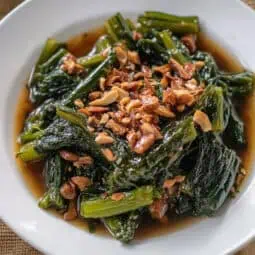
Adobong Kangkong (Filipino Water Spinach Adobo)
Equipment
- Large wok or deep skillet (kawali) For even heat distribution and easy tossing
- Sharp knife (kutsilyo) For precise cutting of vegetables
- Cutting board (Tabla) For preparation work
- Colander (salaan) For washing and draining kangkong
- Measuring cups and spoons (Panukat) For accurate ingredient portions
- Wooden spoon (sandok na kahoy) For gentle stirring without damaging the vegetables
Ingredients
- 1 bunch kangkong water spinach, about 500g
- 1 whole head garlic isang ulo ng bawang, crushed and chopped
- 1 medium onion sibuyas, chopped
- ¼ cup soy sauce toyo
- ⅛ cup vinegar suka
- ½ cup water tubig, optional
- 3 tablespoons cooking oil mantika
- Ground black pepper dinurog na paminta to taste
- Salt asin to taste, optional
Instructions
- Begin by preparing the kangkong: Separate the leaves from the stalks and cut the stalks into 1-inch pieces. Wash thoroughly under running water and drain in a colander (banlawan at patuyuin sa salaan). Peel and crush one whole head of garlic (dikdikin ang isang ulong bawang), then chop the onion (hiwain ang sibuyas).
- Heat 3 tablespoons of cooking oil in a large wok or deep skillet (kawali) over medium heat (180°C/350°F). Add the crushed garlic and sauté until golden brown (igisa ang bawang hanggang maging golden brown), about 2-3 minutes. Remove one-fourth of the browned garlic and set aside for garnish (itabi ang ilang bawang para sa garnish).
- Add the chopped onions to the remaining garlic in the wok and cook until translucent (lutuin ang sibuyas hanggang maging malabo), about 3-4 minutes. Pour in ¼ cup soy sauce (toyo) and ⅛ cup vinegar (suka). Allow the mixture to come to a boil (pakuluin).
- Add the kangkong stalks first and cook for 2 minutes until slightly tender but still crisp (lutuin hanggang medyo lumambot). Add the leaves (ilagay ang mga dahon) and gently stir for 30-60 seconds, being careful not to overcook to prevent bitterness (huwag lutuing masyado para hindi pumait).
- Season with ground black pepper (paminta) and salt (asin) if needed. Give everything a final gentle toss to combine (haluin ng marahan). Transfer to a serving dish and top with the reserved crispy garlic (ilagay sa ibabaw ang inihiwalay na bawang).
- Serve immediately while hot (ihain habang mainit pa) with steamed rice (kanin) for the best taste and texture.
Tips from Lola's Kitchen
- Always separate leaves from stalks as they have different cooking times
- Never overcook kangkong to prevent bitterness (mapait)
- Add toasted garlic last to maintain crunchiness
- Use native vinegar for authentic flavor
- Clean kangkong thoroughly as it often grows in muddy areas
Nutrition
The Story Behind Adobong Kangkong
In every corner of the Philippines, from the bustling streets of Manila to the quiet provinces like Bataan and Cavite, Adobong Kangkong tells a story of Filipino resourcefulness and culinary creativity. This humble dish emerged from our ancestors' practical need to preserve vegetables using vinegar and soy sauce, adapting the Spanish adobo cooking technique to our local ingredients.
What makes Adobong Kangkong particularly special is its accessibility. Water spinach grows abundantly in our tropical climate, thriving in waterways, backyard gardens, and even in makeshift plots in urban areas. During the rainy season, when kangkong grows most prolifically, Filipino families would often have this vegetable in surplus, leading to various cooking innovations – with adobo-style preparation becoming a favorite method.
The genius of Adobong Kangkong lies in its simplicity. Unlike meat adobo that requires hours of simmering, this vegetable version takes just minutes to prepare. The quick cooking time preserves kangkong's nutrients while allowing it to absorb the signature adobo flavors. This practical cooking method became especially popular during the post-war era when meat was scarce, and families relied heavily on vegetables for sustenance.
Today, Adobong Kangkong has evolved from being just a practical solution to a beloved comfort food. Whether served in humble carinderias or prepared in modern Filipino homes, it represents our culture's ability to create something extraordinary from simple ingredients. The dish has even found its way into contemporary Filipino restaurant menus, where chefs often give it upscale twists while maintaining its authentic flavors.
For many Filipinos, including myself, this dish carries memories of family meals where a steaming plate of Adobong Kangkong would sit alongside mountains of rice, its garlic-infused sauce perfect for drizzling over every spoonful. It's a testament to how our cuisine can transform the most basic ingredients into something that brings both nourishment and joy to our tables.
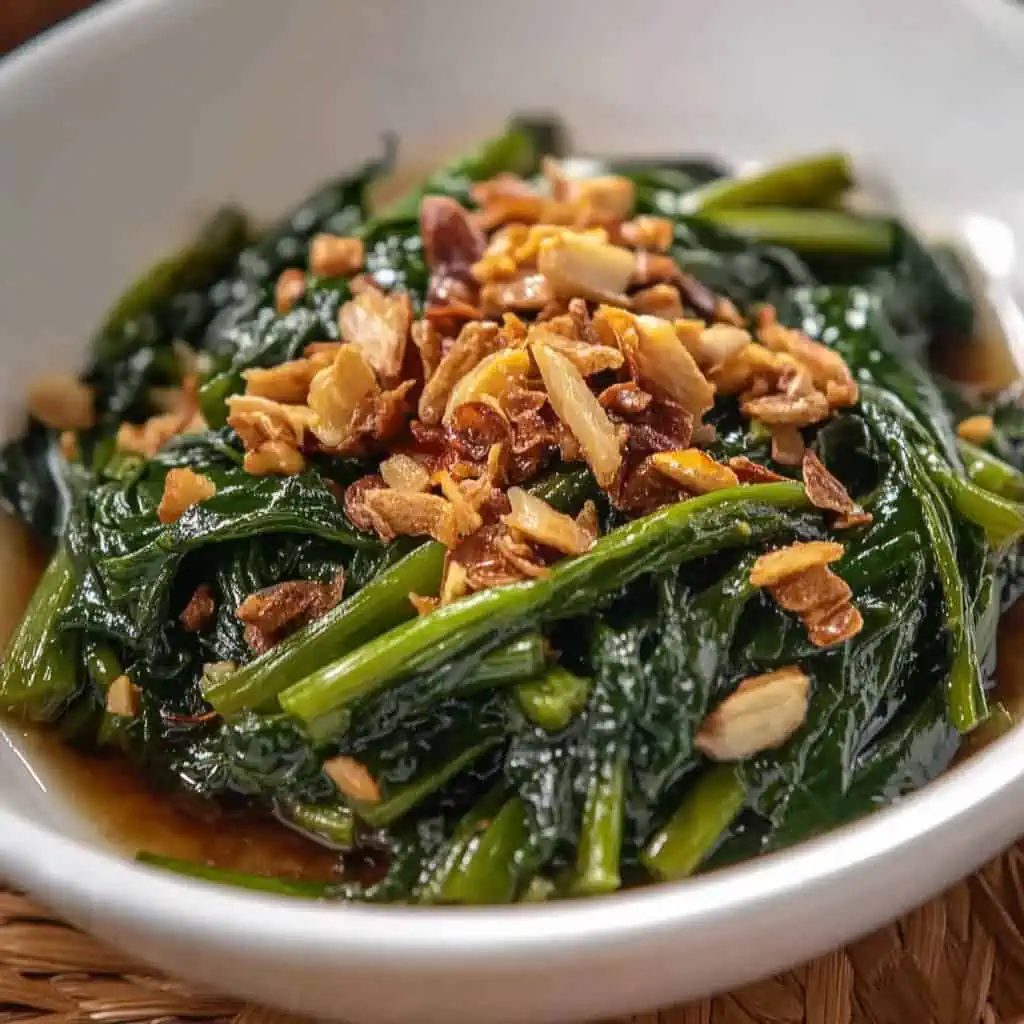

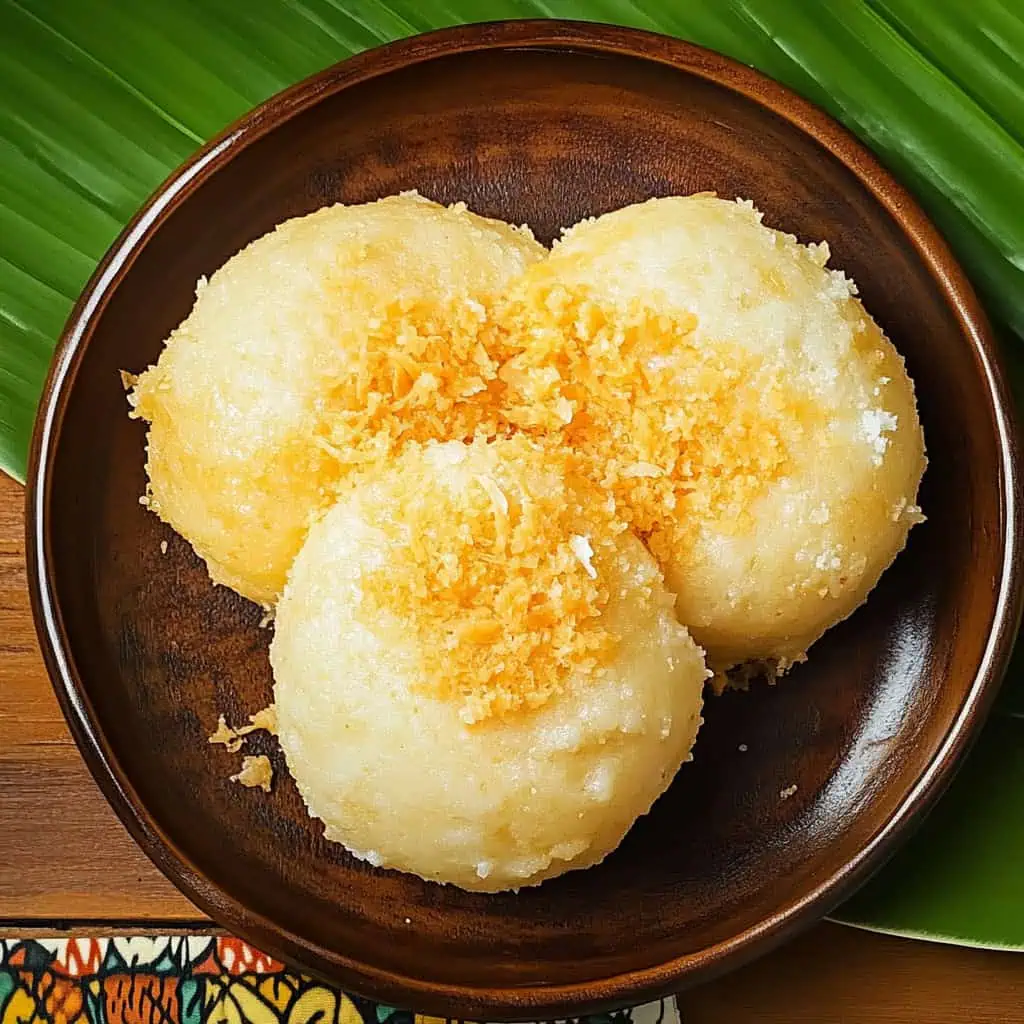
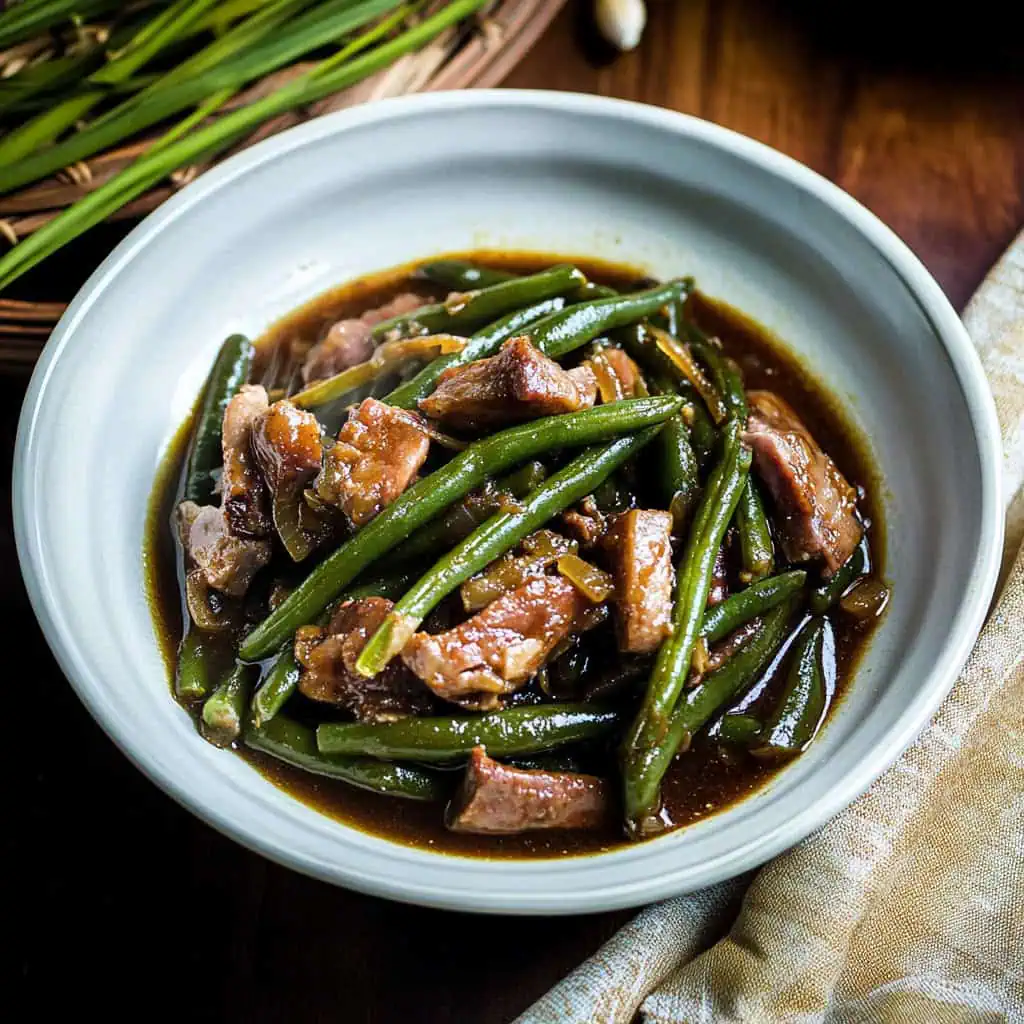

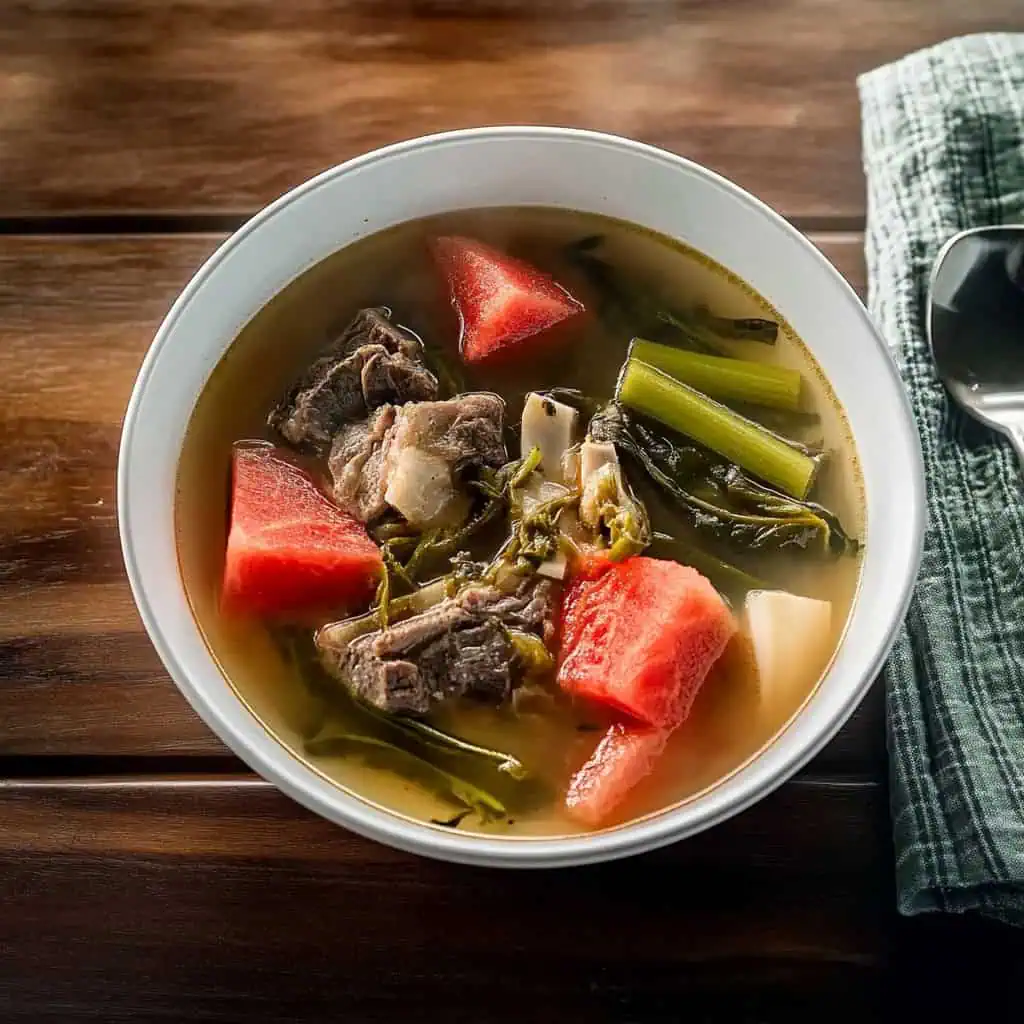
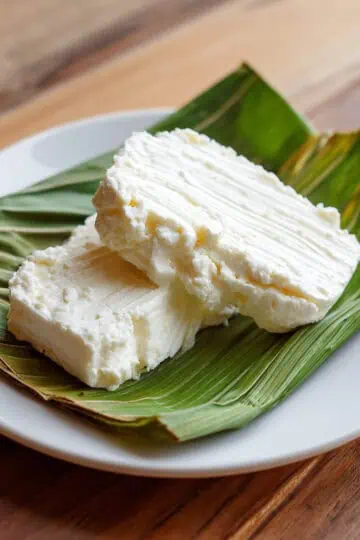
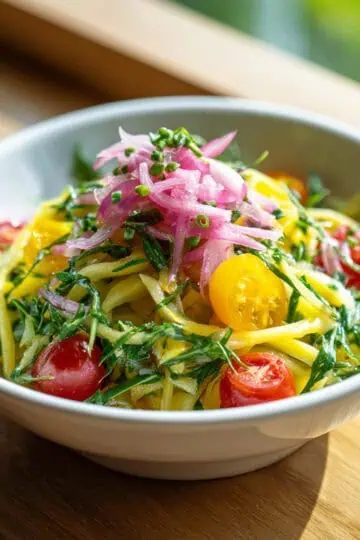
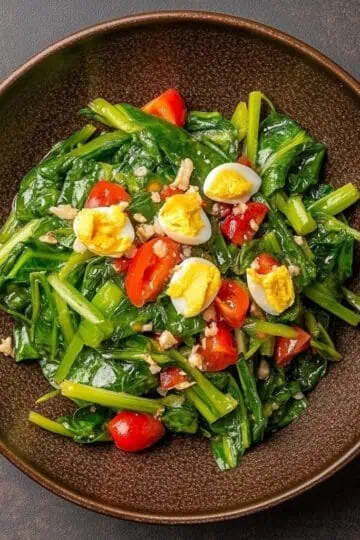

Comments
No Comments